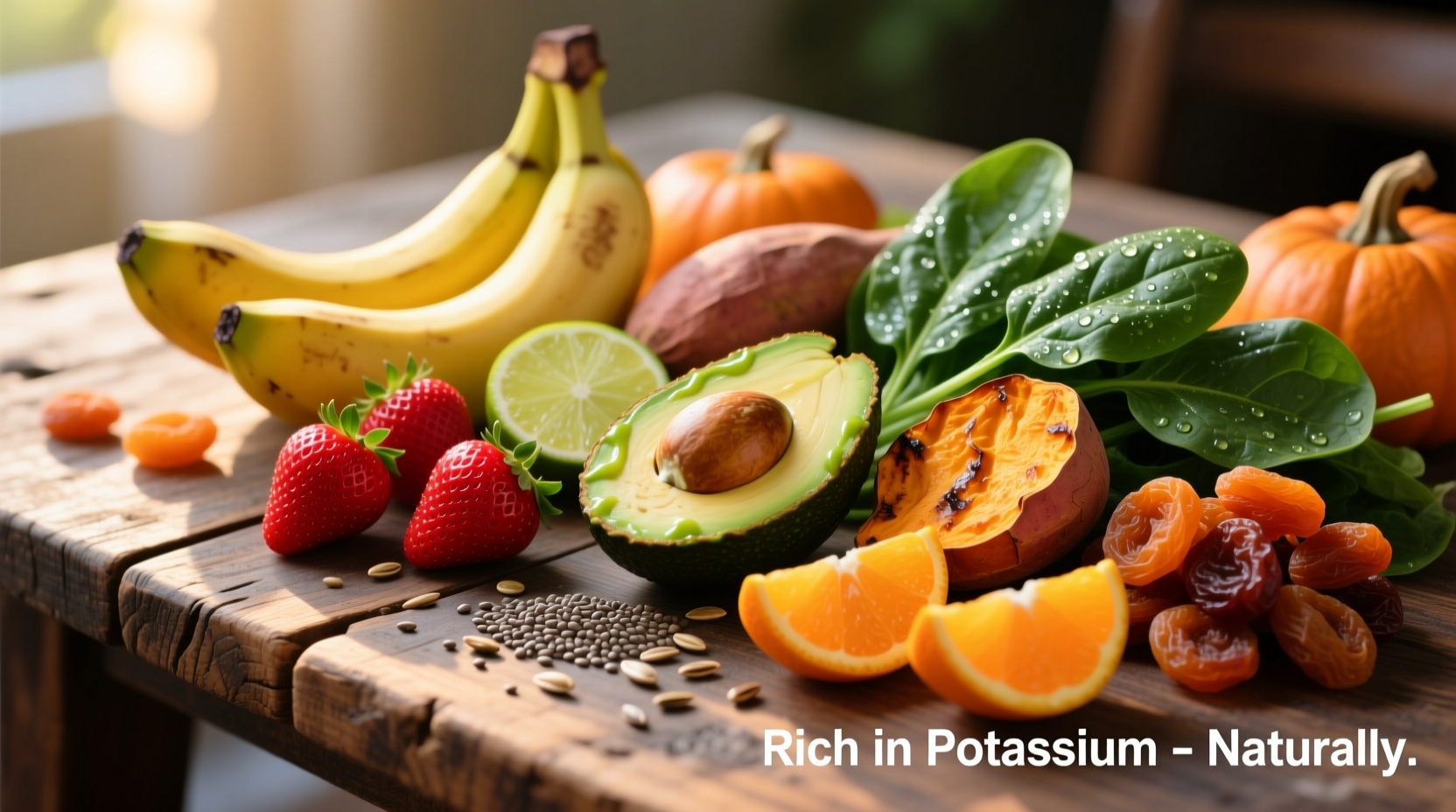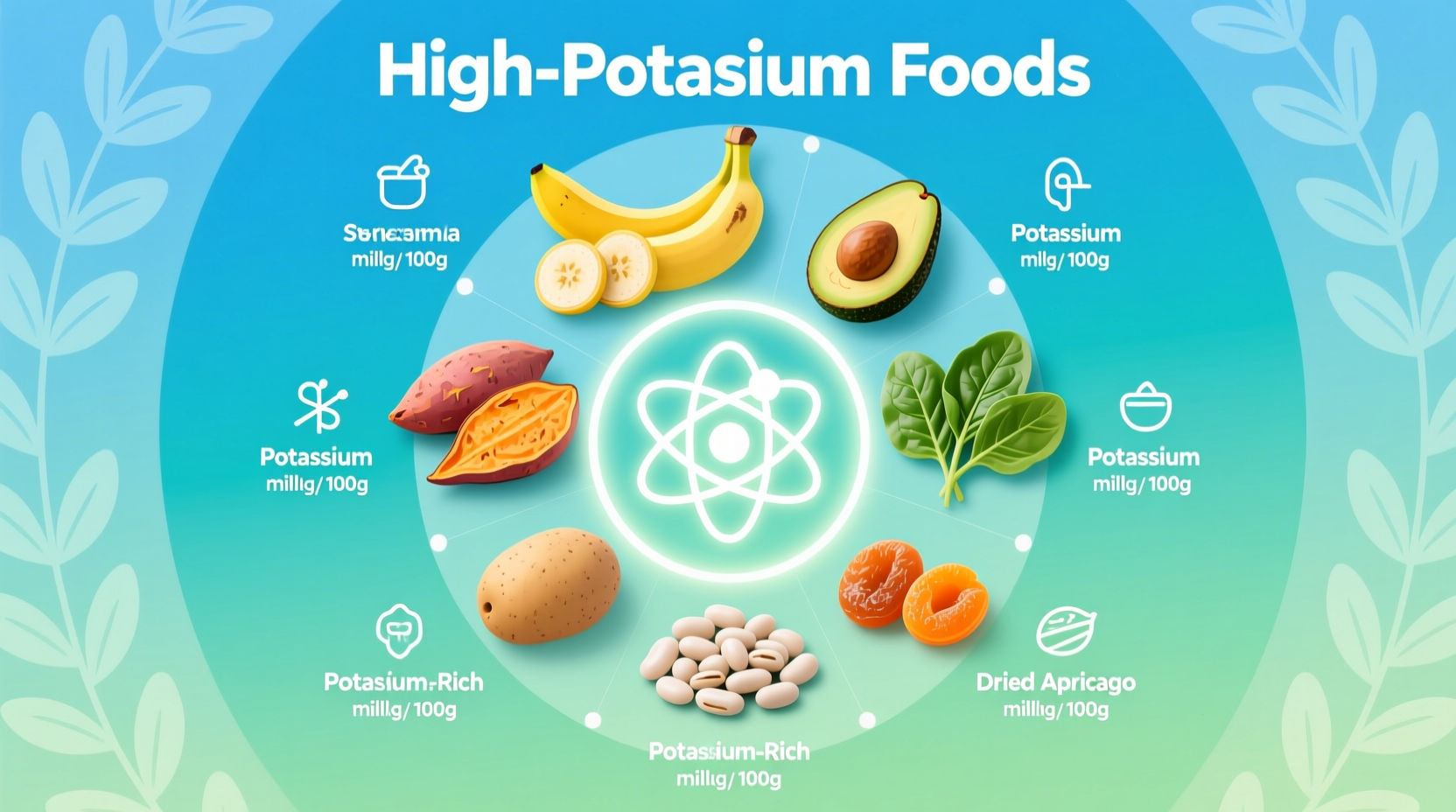Understanding which foods deliver the most potassium is essential for maintaining proper heart function, muscle contractions, and fluid balance. Potassium deficiency affects millions globally, often without noticeable symptoms until serious health issues develop. This comprehensive guide cuts through the confusion with scientifically verified information about the best dietary sources of this critical mineral.
Why Potassium Matters More Than You Think
Potassium isn't just another mineral on a nutrition label—it's a vital electrolyte that regulates your heartbeat, enables muscle movement, and maintains proper fluid balance. According to the National Institutes of Health, adults need 2,600-3,400mg daily, yet fewer than 3% of Americans meet this requirement. Low potassium levels correlate with increased risk of high blood pressure, stroke, and kidney stones.
Unlike supplements, which can cause dangerous imbalances, food-based potassium comes with complementary nutrients that enhance absorption and utilization. The natural sodium-potassium ratio in whole foods helps your body maintain optimal electrolyte balance without the risks associated with supplements.
Your Complete Guide to Potassium Powerhouses
Based on USDA FoodData Central measurements, these foods deliver exceptional potassium content per standard serving. We've organized them by food category to help you build balanced meals that naturally boost your potassium intake.
| Food | Serving Size | Potassium (mg) | % Daily Value |
|---|---|---|---|
| White beans (cannellini) | 1 cup, cooked | 1,005 | 22% |
| Spinach, cooked | 1 cup | 839 | 18% |
| Sweet potato | 1 medium | 542 | 12% |
| Avocado | 1 whole | 708 | 15% |
| Banana | 1 medium | 422 | 9% |
| Salmon, wild | 3 oz | 378 | 8% |
| Yogurt, plain | 1 cup | 380 | 8% |
| Coconut water | 1 cup | 600 | 13% |
Practical Ways to Boost Your Potassium Intake Daily
Knowing which foods contain potassium is only half the battle—you need practical strategies to incorporate them consistently. Here's how to transform your meals without drastic changes to your eating habits:
Breakfast Revolution
Replace your morning cereal with a potassium-packed smoothie featuring spinach (540mg per cup), banana (422mg), and avocado (345mg for half). Add coconut water (600mg per cup) instead of milk for an extra boost. This single meal delivers over 1,900mg of potassium—nearly half your daily requirement.
Lunchtime Transformation
Swap sandwich bread for a sweet potato base. Roast a medium sweet potato (542mg), top with white beans (1,005mg), and add spinach (839mg when cooked). This meal provides over 2,400mg of potassium while delivering complete protein and fiber.
Dinner Upgrade
Replace pasta with spiralized zucchini or spaghetti squash. Top with a tomato-based sauce (tomatoes contain 430mg per cup) and grilled salmon (378mg per serving). Add a side of roasted Brussels sprouts (494mg per cup) for a dinner totaling over 1,300mg of potassium.
Special Considerations for Optimal Potassium Benefits
Certain populations require special attention when increasing potassium intake. According to the National Kidney Foundation, individuals with kidney disease must monitor potassium levels carefully, as impaired kidney function can lead to dangerous potassium buildup. The American Heart Association recommends potassium-rich diets for those managing hypertension, noting that the DASH diet's emphasis on fruits and vegetables significantly lowers blood pressure.
Cooking methods dramatically affect potassium retention. Boiling vegetables can leach up to 50% of their potassium content into water, while steaming preserves more nutrients. When preparing potassium-rich foods like spinach or kale, use minimal water and shorter cooking times to maximize nutrient retention.

Common Misconceptions About Potassium-Rich Foods
Many believe bananas are the ultimate potassium source, but they actually rank lower than numerous other options. One medium banana provides 422mg of potassium, while just half an avocado delivers 345mg plus heart-healthy fats that enhance nutrient absorption. Sweet potatoes contain nearly 30% more potassium than bananas by weight, and white beans deliver more than double the potassium of bananas per serving.
Another common myth suggests that potassium from supplements works the same as food-based potassium. Research published in the American Journal of Clinical Nutrition shows that food-derived potassium comes with complementary compounds that improve absorption and utilization, while supplements can cause dangerous spikes in blood potassium levels, particularly for those with kidney issues.
Maximizing Potassium Absorption Through Food Pairing
Strategic food combinations can significantly enhance your body's ability to utilize potassium. Pairing potassium-rich foods with magnesium sources like almonds or dark leafy greens improves cellular uptake of potassium. Consuming vitamin C-rich foods like bell peppers alongside potassium sources increases bioavailability by up to 20%, according to research from the Harvard T.H. Chan School of Public Health.
Avoid pairing high-potassium foods with excessive sodium, which creates an unfavorable sodium-potassium ratio. The ideal dietary ratio approaches 1:1, but most Western diets feature ratios closer to 10:1. When enjoying potassium-rich meals, minimize added salt and processed ingredients to maintain proper electrolyte balance.











 浙公网安备
33010002000092号
浙公网安备
33010002000092号 浙B2-20120091-4
浙B2-20120091-4